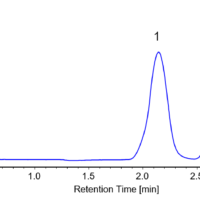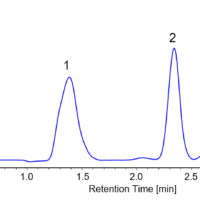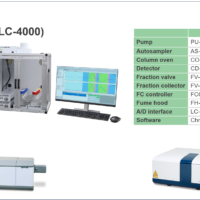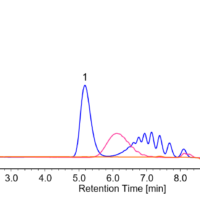Introduction
Supercritical fluid chromatography (SFC) is being increasingly used for the separation and purification of optical isomers (chiral substances) because it is faster than high-performance liquid chromatography (HPLC), reduces the consumption of organic solvents and simplifies post-processing. SFC allows optimum conditions to be identified by automatically varying the type of column (column screening) and the composition of the modifier solvents, thus facilitating optical isomer separation on an analytical scale. After confirming that separation can be achieved on an analytical scale, the SFC system can be scaled up to allow preparative purification. Since SFC is faster and more environmentally friendly than HPLC, it has been widely used for drug discovery by many various pharmaceutical companies, due to stricter regulations on the use and disposal of organic solvents.
There are two methods used for column screening in SFC. In the first, the desired measurement column is selected by switching valves before and after the column. The second is a parallel method in which the flow path is branched at a manifold and the mobile phase and the sample are pumped into several columns simultaneously. The latter allows several measurements to be performed simultaneously, resulting in shorter analysis times.
In this application note, we describe an example of the separation of flavanone, which is a chiral substance, using the parallel SFC system.
Experimental
<Instruments>
CO2 pump: PU-4386
Modifier pump: PU-4086*
Heater: HE-02
Heater Controller: HC-4068-01
Autosampler: AS-4350
Column oven: CO-4060*
UV detector: UV-4075* x 4
BP regulator: BP-4340
* with option units
<SFC Conditions>
Column: CHIRALPAK IA, IB, IC, ID * (4.6 mmI.D. x 150 mmL, 5 µm)
Eluent A: Carbon dioxide
Eluent B: Acetonitrile, methanol
Flow rate: Eluent A; 8.0 mL/min, Eluent B; 3.0 mL/min
Column temp.: 40 ºC
Wavelength: 250 nm
Back pressure: 15 MPa
Inj. volume: 10 µL
Sample: 1 mg/mL flavanone in methanol
* CHIRALPAK is a trademark or registered mark of Daicel Corporation.
<Structures>

<Schematic Diagram>
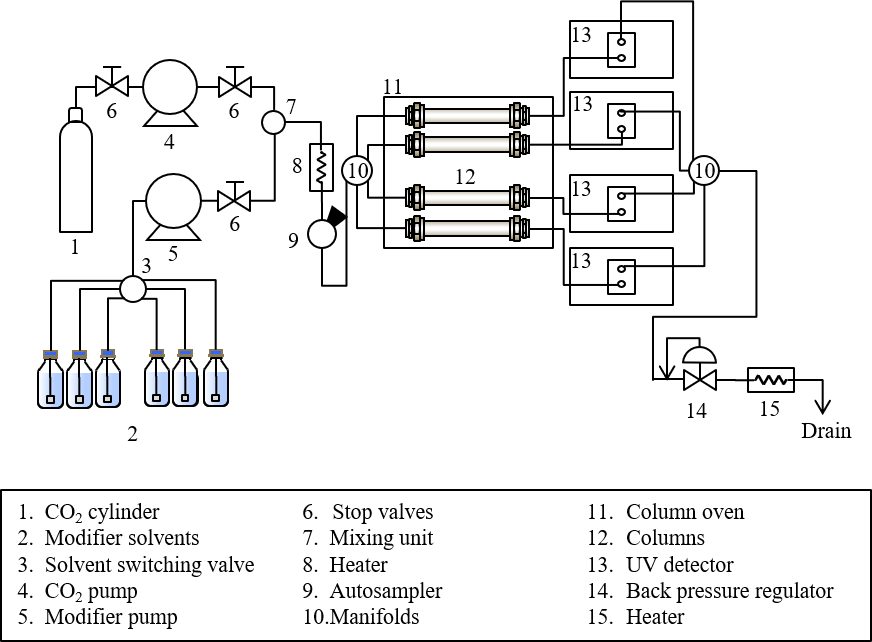
Keywords
SFC, chiral substance, column screening, CHIRALPAK, UV detector
Results
Figure 1 shows chromatograms of flavanone obtained using the parallel SFC system.
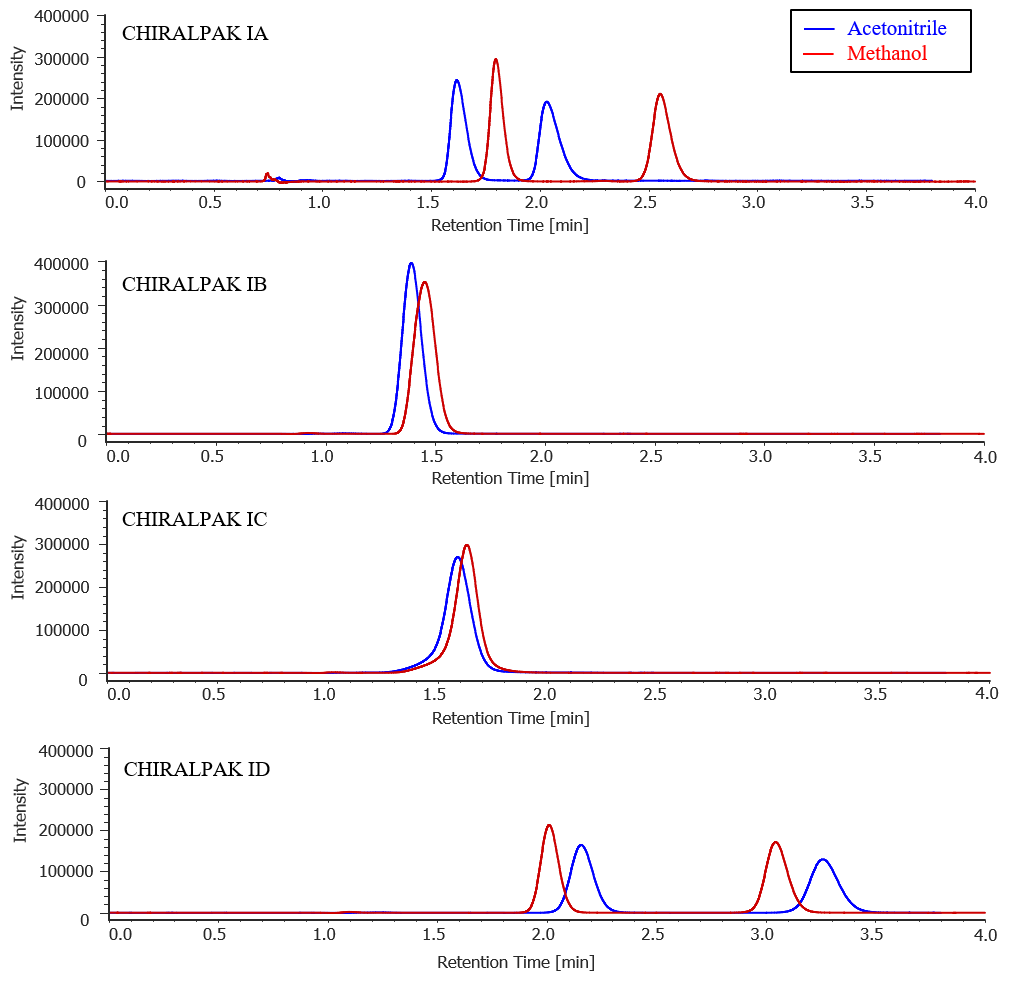
Fig. 1 Chromatograms of flavanone obtained using the parallel SFC system (at UV 250 nm)
Acetonitrile and methanol were used as modifier solvents and both gave separation results within 4 min. The results show that for both solvents, racemic forms of flavanone could be separated on CHIRALPAK IA and ID columns. For CHIRALPAK IA, the peaks were eluted with a shorter retention time when using acetonitrile than when using methanol, but the opposite results were obtained for CHIRALPAK ID. The reproducibility of the retention times and the peak areas on CHIRALPAK IA and ID columns when using acetonitrile and methanol are shown in Tables 1 to 4.
Table 1 Reproducibility of measurement results obtained using parallel SFC system (modifier solvent: acetonitrile, column: CHIRALPAK IA)
| Number of injections | Flavanone 1 | Flavanone 2 | ||
| tR [min] | Peak area | tR [min] | Peak area | |
| 1 | 1.627 | 1232807 | 2.046 | 1232651 |
| 2 | 1.633 | 1258190 | 2.045 | 1248113 |
| 3 | 1.617 | 1241883 | 2.029 | 1240881 |
| 4 | 1.624 | 1241476 | 2.039 | 1230797 |
| 5 | 1.627 | 1258181 | 2.040 | 1246964 |
| Ave. | 1.626 | 1246507 | 2.040 | 1239881 |
| SD | 0.005 | 10071 | 0.006 | 7124 |
| RSD [%] | 0.320 | 0.808 | 0.296 | 0.575 |
Table 2 Reproducibility of measurement results obtained using parallel SFC system (modifier solvent: acetonitrile, column: CHIRALPAK ID)
| Number of injections | Flavanone 1 | Flavanone 2 | ||
| tR [min] | Peak area | tR [min] | Peak area | |
| 1 | 2.177 | 1231384 | 3.309 | 1231448 |
| 2 | 2.176 | 1255521 | 3.288 | 1253962 |
| 3 | 2.157 | 1238788 | 3.261 | 1241872 |
| 4 | 2.165 | 1241112 | 3.288 | 1245737 |
| 5 | 2.163 | 1247816 | 3.275 | 1254756 |
| Ave. | 2.168 | 1242924 | 3.284 | 1245555 |
| SD | 0.008 | 8200 | 0.016 | 8578 |
| RSD [%] | 0.357 | 0.660 | 0.485 | 0.689 |
Table 3 Reproducibility of measurement results obtained using parallel SFC system (modifier solvent: methanol, column: CHIRALPAK IA)
| Number of injections | Flavanone 1 | Flavanone 2 | ||
| tR [min] | Peak area | tR [min] | Peak area | |
| 1 | 1.782 | 1272380 | 2.531 | 1270850 |
| 2 | 1.797 | 1266372 | 2.553 | 1272041 |
| 3 | 1.787 | 1262603 | 2.538 | 1264940 |
| 4 | 1.788 | 1249751 | 2.545 | 1253775 |
| 5 | 1.797 | 1256198 | 2.554 | 1263684 |
| Ave. | 1.790 | 1261461 | 2.544 | 1263684 |
| SD | 0.006 | 7867 | 0.009 | 6504 |
| RSD [%] | 0.330 | 0.624 | 0.346 | 0.514 |
Table 4 Reproducibility of measurement results obtained using parallel SFC system (modifier solvent: methanol, column: CHIRALPAK ID)
| Number of injections | Flavanone 1 | Flavanone 2 | ||
| tR [min] | Peak area | tR [min] | Peak area | |
| 1 | 1.995 | 1240478 | 3.026 | 1244109 |
| 2 | 2.010 | 1251413 | 3.045 | 1253958 |
| 3 | 2.000 | 1238216 | 3.028 | 1241664 |
| 4 | 2.000 | 1218774 | 3.035 | 1234367 |
| 5 | 2.010 | 1236875 | 3.042 | 1241633 |
| Ave. | 2.003 | 1237151 | 3.035 | 1243146 |
| SD | 0.006 | 10520 | 0.007 | 6315 |
| RSD [%] | 0.300 | 0.850 | 0.246 | 0.508 |
For comparison, when the same measurements were carried out using the column-switching method, the total analysis time required to obtain four chromatograms was approximately 46 min, including the equilibration time for the columns. Therefore, in this measurement, the parallel method reduced the analysis time by more than a factor of ten. Also, although only two modifier solvents were used in the present case, increasing the number of solvents (up to 10) would lead to even greater speed advantages over the column-switching method.

